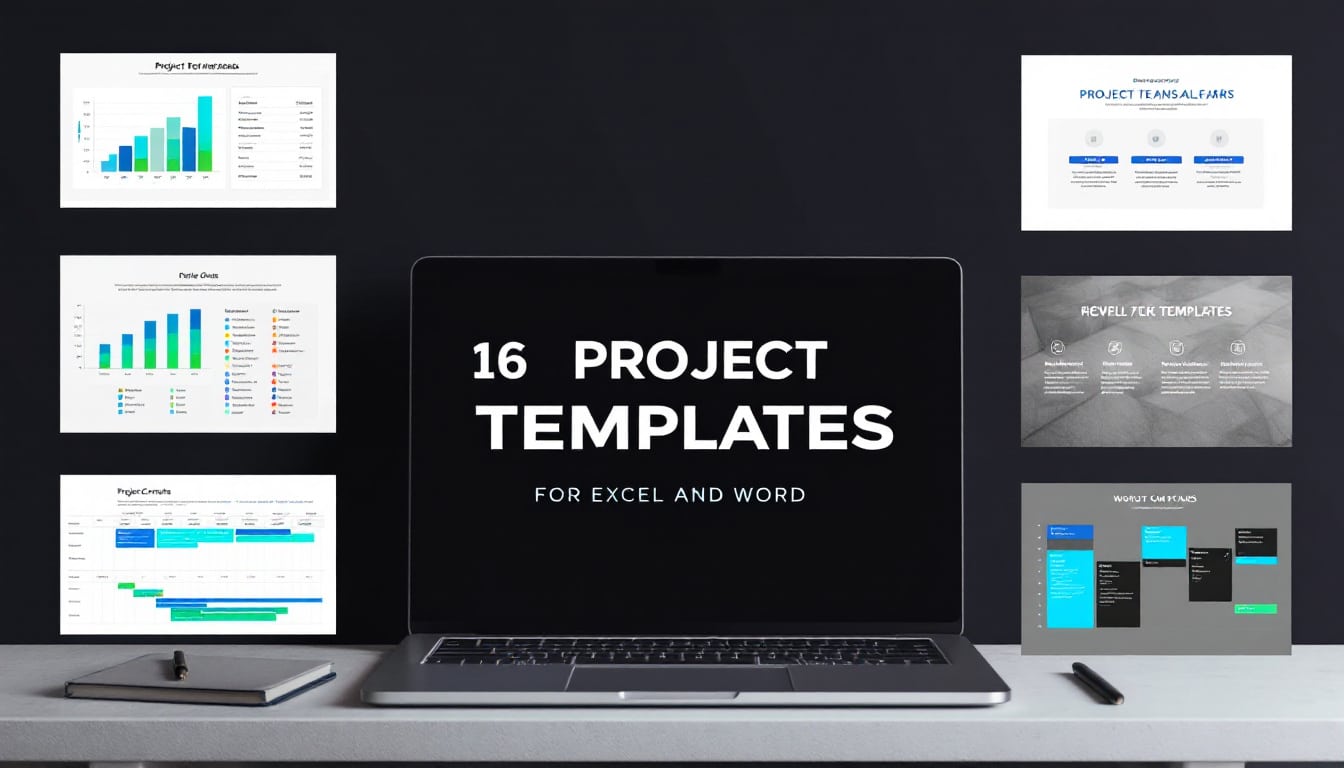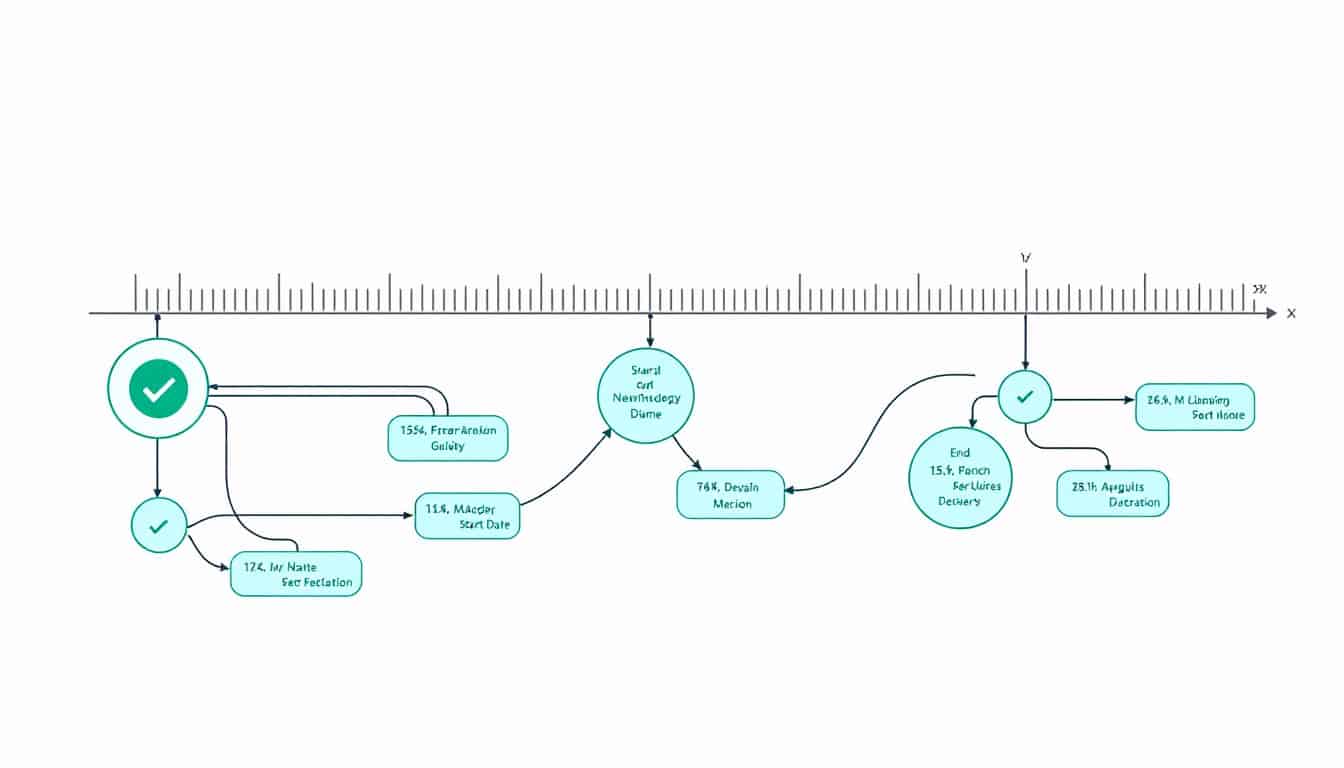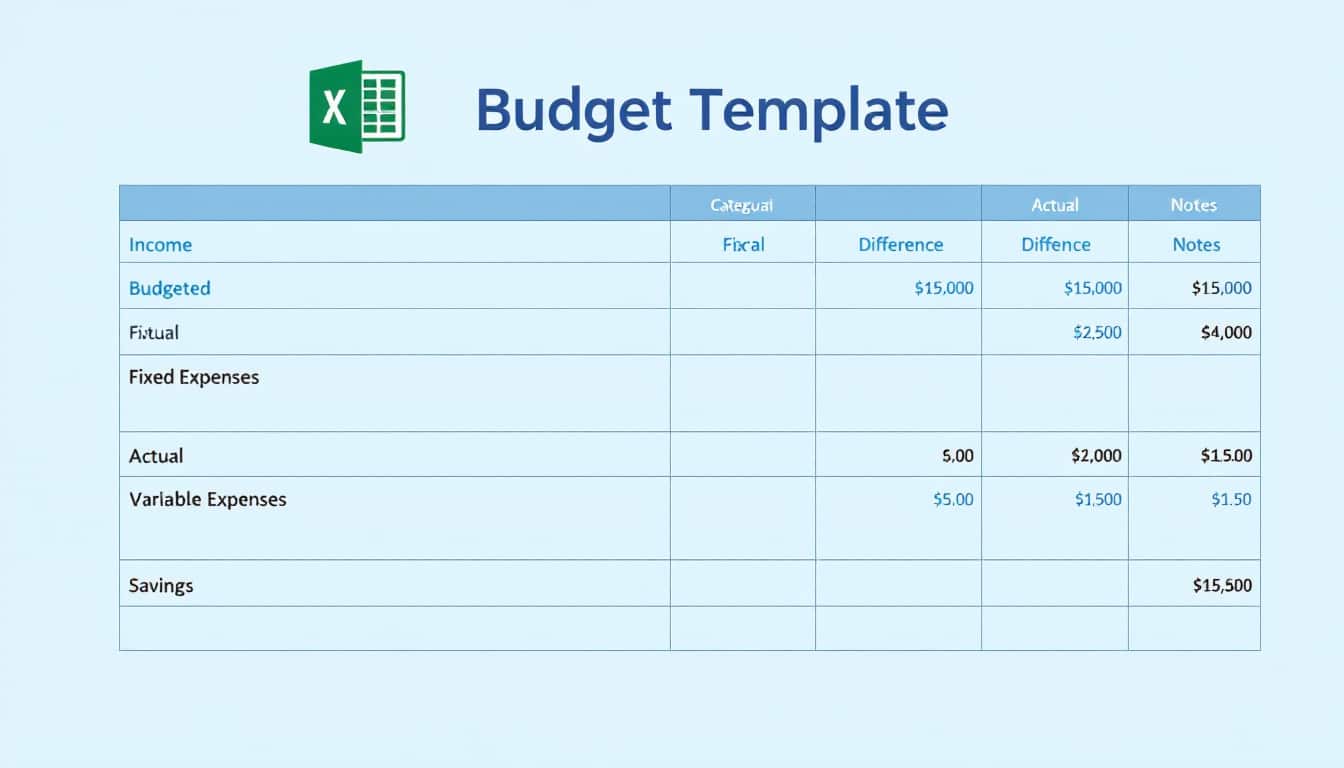Project management in construction aims to deliver projects on time and within budget.
Through value engineering, general contractors optimize costs while maintaining quality.
This systematic method improves the value of a project by analyzing its components.
Value engineering is an innovative approach that revolutionizes construction project management. By focusing on functionality, it allows for cost reductions without sacrificing quality or performance. This method involves a detailed analysis of components, processes, and materials used. With various techniques, value engineering provides effective and economical solutions. Project teams collaborate closely to identify and eliminate unnecessary costs. The use of project management software, such as ProjectManager, facilitates resource optimization and budget control. Thus, each phase of the project benefits from better planning and more efficient execution.
🔥 Nous recommandons Ideamap
Ideamap est l’outil idéal pour un brainstorming ou un projet collaboratif. Grâce son interface facile et à ses fonctions IA, Ideamap booste votre créativité tout en favorisant une meilleure organisation de vos idées pour atteindre vos objectifs.
Value engineering in construction works through a functional analysis that identifies the essential functions of each project component. This analysis allows for the finding of cheaper materials or construction methods without compromising quality. Creative problem solving is at the heart of this process, involving close collaboration among stakeholders, designers, engineers, and contractors. Project management tools, like Gantt charts, help plan and track tasks, resources, and costs, thereby facilitating the reduction of unnecessary expenses. By integrating these practices from the design phase, value engineering maximizes return on investment while adhering to budgetary and time constraints.
The implementation of value engineering follows a structured methodology divided into several phases. The information phase gathers all necessary data, while the functional analysis defines the essential functions of the project. The creative phase encourages brainstorming to explore alternative solutions. Next, the idea evaluation phase allows for selecting the most viable and economical options. The development phase elaborates on the chosen solutions, and the final presentation submits recommendations to stakeholders. Finally, the implementation and monitoring phase ensure that the changes deliver the expected benefits and are successfully integrated into the project.
Among the effective techniques used in value engineering, Target Value Design (TVD) aligns project design with a predetermined budget. Life Cycle Costing (LCC) assesses the total cost of ownership over the building’s lifespan, favoring sustainable and economical choices. The Function Analysis System Technique (FAST) breaks down the project functions to identify cost-saving opportunities. Integrated Project Delivery (IPD) encourages collaboration among all project stakeholders from the outset. Lastly, Design-to-Cost (DTC) guides the design process based on budgetary goals.
The advantages of value engineering in construction are numerous. It helps establish realistic expectations for stakeholders by aligning project goals with financial constraints. For contractors, this method maximizes profit margins by identifying cost-saving opportunities without compromising quality. Additionally, it clearly defines project requirements and construction specifications, thus reducing the risks of costly modifications and delays. The use of ProjectManager facilitates resource management, cost tracking, and process optimization, thereby ensuring better execution of construction projects.
#>
Hello, my name is Héloïse, I am 33 years old, and I am a writer. Passionate about words and creativity, I put my expertise at the service of your projects to bring them to life through engaging and tailored content.
What is value engineering in construction?
Value engineering in the construction sector is a systematic method aimed at enhancing the value of a project by optimizing its functions while reducing costs. This approach involves a detailed analysis of project components, processes, and materials to find the most effective and economically advantageous solutions without compromising quality, safety, or performance.
The main objective of value engineering is to maximize return on investment (ROI) by identifying and eliminating unnecessary costs through alternative approaches. This process typically takes place during the design phase, but it can also be applied during construction to discover more economical methods.
By analyzing the essential functions of each project component, value engineering allows for the identification of cheaper materials or construction methods without sacrificing quality. This approach relies on creative problem-solving, involving close collaboration among stakeholders, designers, engineers, and contractors.
Moreover, utilizing project management software can significantly facilitate value engineering. These tools provide features for cost control, resource management, and project optimization throughout its lifecycle. For example, ProjectManager offers Gantt charts that help plan tasks, resources, and costs, assisting construction managers in identifying areas where costs can be reduced without affecting the quality or performance of the project.
How to implement value engineering in a construction project?
Implementing value engineering in a construction project follows a structured process composed of several distinct phases. These steps guide the project team in analyzing and improving the functional aspects, costs, and feasibility of the project. Here are the key phases to explore:
Information phase
During the information phase, the project team gathers all necessary data and documentation, including specifications, design plans, and budget information. This step aims to thoroughly understand the project’s scope, objectives, and constraints, providing a clear view of the current status before any modifications are made.
Functional analysis phase
The functional analysis phase involves identifying and defining the essential functions of each component or aspect of the project. By breaking down each function and its associated costs, the team can determine where value improvements or savings can be achieved without compromising the overall performance of the project.
Creative phase
The creative phase is where the team brainstorms and explores all possible alternatives or innovative solutions to achieve the same functions more effectively or economically. This step encourages creativity and problem-solving, allowing for proposals of different materials, processes, technologies, or design modifications that can help reduce costs while delivering the expected results.
Evaluation phase
Next, in the evaluation phase, the ideas and alternatives generated during the creative phase are examined and assessed based on their feasibility, cost-effectiveness, and impact on the project. This step involves a detailed analysis to determine which alternatives offer the greatest value at the lowest cost, considering criteria such as performance, risk, and implementation time.
Development phase
After evaluating the alternatives, the most promising options are further developed in the development phase. This includes creating more detailed plans and specifications for the selected alternatives, as well as determining their feasibility and financial implications. Testing or prototyping may also be conducted to ensure that the proposed changes can be successfully integrated into the project.
Presentation phase
The presentation phase involves submitting the developed ideas and alternatives to project stakeholders, such as clients, designers, contractors, and team members. It is at this stage that final recommendations are made, highlighting the benefits of the proposed changes and justifying the cost savings and value improvements. The objective is to obtain stakeholder approval for the proposed value engineering solutions.
Implementation and monitoring phase
Finally, in the implementation and monitoring phase, the approved value engineering recommendations are put into action. This includes integrating the changes into the project’s design or construction process. It is crucial to monitor progress and the effectiveness of the changes made, tracking outcomes, comparing actual savings to projected savings, and ensuring that improvements are properly integrated into the project for long-term success.
What are the techniques of value engineering in construction?
Value engineering in construction relies on structured techniques to optimize costs while maintaining or improving the functionality and quality of the project. Here are some of the most effective techniques used in this field:
Target Value Design (TVD)
Target Value Design is a cost-focused approach that aligns project design with a predetermined budget. Instead of designing first and estimating costs later, this method ensures that designs are developed with budgetary constraints in mind from the outset. This encourages collaboration among architects, engineers, and contractors to create economically effective solutions while meeting project goals.
Life Cycle Costing (LCC)
Life Cycle Costing assesses the total cost of ownership of a building or infrastructure over its lifespan, considering not only the initial construction costs but also maintenance, operating, energy consumption, and disposal costs. This technique ensures that design choices lead to long-term savings by prioritizing sustainable and efficient materials or systems.
Function Analysis System Technique (FAST)
The Function Analysis System Technique (FAST) is a structured method used to break down a project or system into its basic functions. It helps teams analyze each component’s contribution to the overall project objectives and identify areas where costs can be reduced without sacrificing essential functions. By organizing functions in a logical diagram, FAST facilitates better decision-making in value engineering.
Integrated Project Delivery (IPD)
Integrated Project Delivery (IPD) is a collaborative approach that brings together all key project stakeholders—including owners, designers, engineers, and contractors—early in the process to optimize design, costs, and execution. By promoting teamwork and shared responsibility, IPD helps to minimize waste, reduce costs, and ensure that value engineering decisions are implemented effectively.
Design-to-Cost (DTC)
Design-to-Cost (DTC) is a method where cost objectives guide the design process. Rather than allowing costs to rise as designs become more complex, DTC ensures that financial constraints are considered from the outset. This technique favors value-based decisions by selecting materials, construction methods, and designs that align with budgetary goals without compromising performance.
What are the benefits of value engineering in construction?
Value engineering in construction offers a structured approach to optimizing project costs and improving efficiency while maintaining or enhancing quality. By focusing on functionality and profitability, it helps stakeholders align project objectives with financial constraints, leading to better outcomes. Here are some of the main advantages of implementing value engineering in construction projects:
Realistically assess stakeholder expectations
One significant advantage of value engineering is that it aligns stakeholder expectations with the feasibility of the project. By analyzing costs, functions, and design alternatives early in the project phases, it ensures that all parties—owners, designers, and contractors—clearly understand what can be achieved within budgetary and time limits. This transparency reduces misunderstandings and helps stakeholders make informed decisions regarding project scope and priorities.
Maximize profit margins for contractors
Value engineering helps contractors improve their profitability by identifying cost-saving opportunities without sacrificing project quality. By selecting more efficient materials, alternative construction methods, or streamlined processes, contractors can reduce unnecessary expenses and enhance efficiency. Furthermore, this can lead to reduced waste, shorter project timelines, and better resource allocation, contributing to higher profit margins.
Define clear project requirements and construction specifications
Through structured functional analysis, value engineering in construction ensures that project requirements and specifications are well-defined before construction begins. This clarity helps prevent design changes, delays, and cost overruns later on. By focusing on the essential functions of each project component, it aids in establishing precise specifications that meet both performance objectives and budgetary constraints, leading to smoother project execution.
What tools can help manage value engineering in construction projects?
The use of project management software can greatly facilitate value engineering in construction projects. These tools offer a range of features that support cost control, resource management, and project optimization throughout its lifecycle. For example, ProjectManager provides Gantt charts that help plan tasks, resources, and costs, assisting construction managers in identifying areas where costs can be reduced without affecting the quality or performance of the project.
The Gantt charts of ProjectManager allow linking task dependencies to avoid cost overruns, filtering the critical path to manage float, and establishing a baseline to monitor expenses in real time. This enables the quick identification of inefficiencies and informed decision-making to reduce costs. Additionally, the collaborative features of ProjectManager, such as file sharing and task-level comments, enhance communication and teamwork, essential for identifying cost-effective solutions.
For more information on how project management software can support value engineering in construction, check out this article. It provides concrete examples and practical advice for optimizing your projects.
How to integrate value engineering into design and construction phases?
Integrating value engineering into the design and construction phases requires a methodical approach. Here are some key steps to ensure successful integration:
Early stakeholder collaboration
Involving all stakeholders—owners, designers, engineers, and contractors—from the project’s outset fosters a better understanding of objectives and constraints. This collaboration allows for the quick identification of value improvement opportunities and reduces potential discrepancies.
Utilization of project management tools
Project management tools, such as project management software, facilitate the planning, tracking, and coordination of the various phases of value engineering. They help maintain an overview of the project, manage resources effectively, and ensure that proposed changes are coherently integrated.
Training and awareness of the team
Ensuring that the entire project team understands the principles of value engineering and knows how to apply them is essential for the success of this approach. Training sessions and workshops can help strengthen the necessary skills and promote a culture of continuous improvement.
For further insight into quantity assessment in construction and associated processes, feel free to read this article. It offers a detailed perspective on the benefits and methodologies related to quantity assessment, crucial for effective value engineering.
What are the best practices for successful value engineering in construction?
To successfully implement value engineering in construction, it is important to follow certain best practices that ensure effective optimization of costs and functionalities. Here are some key recommendations:
Clearly define project goals
Before starting any analysis, it is essential to clearly define the project goals. This includes understanding stakeholder expectations, budget constraints, and performance requirements. Well-defined objectives provide a solid foundation for all subsequent stages of value engineering.
Adopt a structured approach
Using a structured methodology helps systematize the value engineering process. Each phase, from information gathering to implementing recommendations, must follow a well-defined framework to ensure thorough and consistent analysis.
Encourage creativity and innovation
Fostering an environment where innovative ideas are encouraged can lead to ingenious solutions for reducing costs and improving value. Teams should be open to experimenting with new approaches and challenging traditional methods.
Ensure effective communication
Clear and open communication among all stakeholders is crucial for the success of value engineering. Regular meetings, project updates, and continuous feedback help keep everyone aligned and address potential issues promptly.
Continuously evaluate and adjust
Value engineering is a dynamic process that requires continuous evaluation of progress and adjustments based on new information and changes in the project. This ensures that the solutions implemented remain relevant and effective throughout the project’s lifecycle.
What are the common challenges of value engineering and how to overcome them?
Despite its many advantages, value engineering can encounter several challenges in the construction sector. Identifying these obstacles and putting strategies in place to overcome them is essential to ensuring the success of this approach. Here are some of the most common challenges and possible solutions:
Resistance to change
Resistance to change is frequently encountered when it comes to modifying traditional processes or methods of work. To overcome this resistance, it is crucial to clearly communicate the benefits of value engineering and actively involve stakeholders in the decision-making process. Adequate training and demonstrating past successes can also help alleviate reluctance.
Lack of accurate data
An effective value analysis requires precise and complete data. A lack of information can hinder the team’s ability to identify and evaluate savings opportunities. It is important to establish robust data collection and management systems from the project’s outset to ensure that all necessary information is available and up to date.
Aligning performance objectives
Another major challenge is ensuring that cost-reduction changes do not compromise the project’s performance or quality. To avoid this, each proposed alternative must be carefully evaluated not only for its cost-reducing potential but also for its potential impact on performance, safety, and quality. Testing and prototypes can be used to validate that the chosen solutions meet essential project requirements.
Coordination among teams
Value engineering requires close collaboration among different teams, which sometimes can pose coordination problems. To facilitate this collaboration, the use of effective project management tools is essential. Software like ProjectManager can enhance communication and coordination by centralizing project information and allowing for real-time collaboration.
What are the future trends in value engineering in construction?
Value engineering continues to evolve with technological advances and innovations in the construction sector. Here are some trends shaping the future of this discipline:
Integration of digital technology
Digital technologies, such as BIM (Building Information Modeling), advanced project management software, and artificial intelligence, are playing an increasingly important role in value engineering. These tools enable better project visualization, deeper data analysis, and faster and more precise decision-making.
Sustainability and green construction
Sustainability is becoming a major priority in construction. Value engineering increasingly integrates green building practices by selecting eco-friendly materials and optimizing the energy efficiency of buildings. This trend responds to the growing demand for environmentally friendly solutions and contributes to reducing the carbon footprint of construction projects.
Advanced collaborative approaches
Collaborative methods, such as Integration Project Delivery (IPD), are becoming increasingly popular. These approaches promote closer collaboration among all stakeholders from the early phases of the project, thus facilitating a better integration of value engineering principles and continuous optimization throughout the project lifecycle.
Increased use of real-time data
The use of sensors and the Internet of Things (IoT) allows for real-time data collection on construction sites. These data can be analyzed to quickly identify inefficiencies and make immediate adjustments, thereby proactively improving efficiency and reducing costs.
By exploring these future trends, construction professionals can continue to improve their value engineering practices, adopting technological innovations and responding to increasing demands for sustainability and efficiency.
How to choose the right value engineering methods for your project?
Choosing the right value engineering methods is essential for optimizing the outcomes of your construction project. Here are some criteria to consider when selecting the most suitable methods:
Analyze the specific needs of the project
Each construction project has unique needs. It is important to thoroughly analyze the specific requirements of the project, including performance objectives, budget constraints, and timelines, to determine which value engineering methods will be most effective.
Evaluate available resources
Available resources, whether human, financial, or technological, should be taken into account when choosing methods. For example, if your team already has advanced project management tools, integrating techniques like Target Value Design (TVD) may be easier and quicker.
Compatibility with existing processes
The chosen methods should be compatible with the company’s existing processes and systems. Good integration helps minimize disruptions and ensures a smooth implementation of value engineering techniques.
Team training and expertise
Ensure that your team possesses the necessary skills to apply the selected methods. If additional skills are required, consider providing training or hiring experts to ensure the success of value engineering.
By considering these criteria, you can select the value engineering methods that will provide the best balance of cost, efficiency, and quality for your construction project.
Success stories of value engineering in construction
Many construction projects have benefited from the effective application of value engineering, resulting in significant savings and quality improvement. Here are a few examples illustrating the success of this approach:
Case study: Cost reduction in a commercial building project
A commercial building project successfully reduced its construction costs by 15% through value engineering. By analyzing the essential functions of various building systems, the team identified cheaper alternative materials without compromising quality or durability. The use of ProjectManager allowed for real-time cost tracking and proactive adjustment of plans, thus ensuring adherence to budget and schedule.
Case study: Energy efficiency improvement in a residential complex
In a residential complex, value engineering was used to optimize energy efficiency. By integrating more efficient heating and cooling systems from the design phase, the project not only reduced future operating costs but also improved resident comfort. This approach helped meet sustainability requirements while providing added value to clients.
These examples demonstrate how value engineering can be strategically applied to achieve financial and qualitative goals in various types of construction projects.
What are the benefits of using ProjectManager for value engineering?
ProjectManager is a powerful tool that can greatly facilitate value engineering in construction projects. Here are some of the benefits offered by this software:
- Cost planning and tracking: ProjectManager’s Gantt charts allow for detailed planning of tasks, resources, and costs, helping to identify opportunities for cost reductions without affecting project quality.
- Resource management: The software offers resource management features to efficiently allocate personnel, equipment, and materials, optimizing resource use and reducing waste.
- Improved collaboration: Collaborative features, such as file sharing and task-level comments, enhance communication among team members, making it easier to find economical and effective solutions.
- Real-time tracking: Dashboards and real-time reports allow for tracking project progress, monitoring expenses, and quickly detecting inefficiencies, enabling proactive adjustments to keep the project on track.
- Data analysis: ProjectManager enables the analysis of project data to identify trends and areas for improvement, thus supporting data-driven decision-making.
By using ProjectManager, project managers can more effectively manage value engineering, ensuring more profitable and higher-quality projects.
To discover all the features of ProjectManager and how they can transform your construction projects, consider starting free today.














